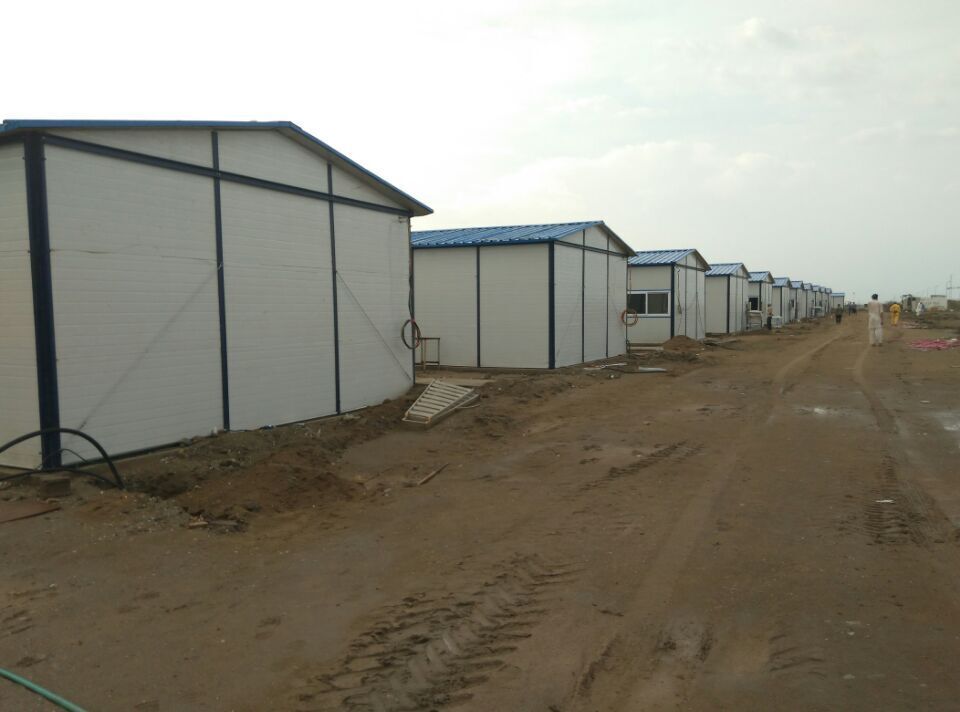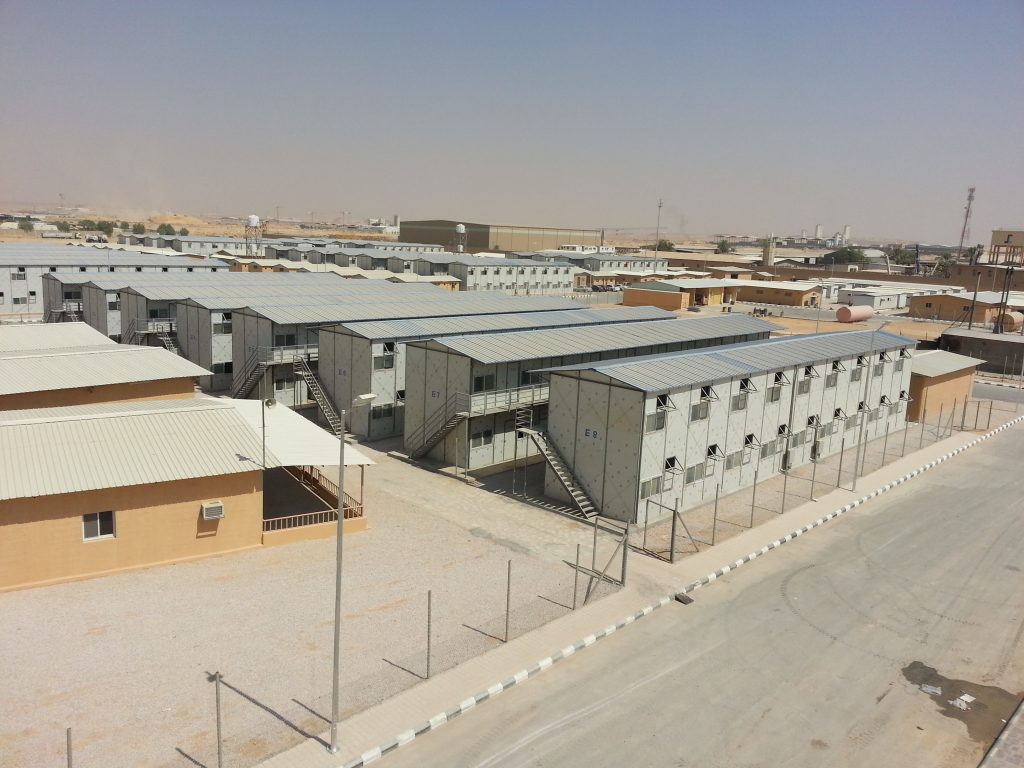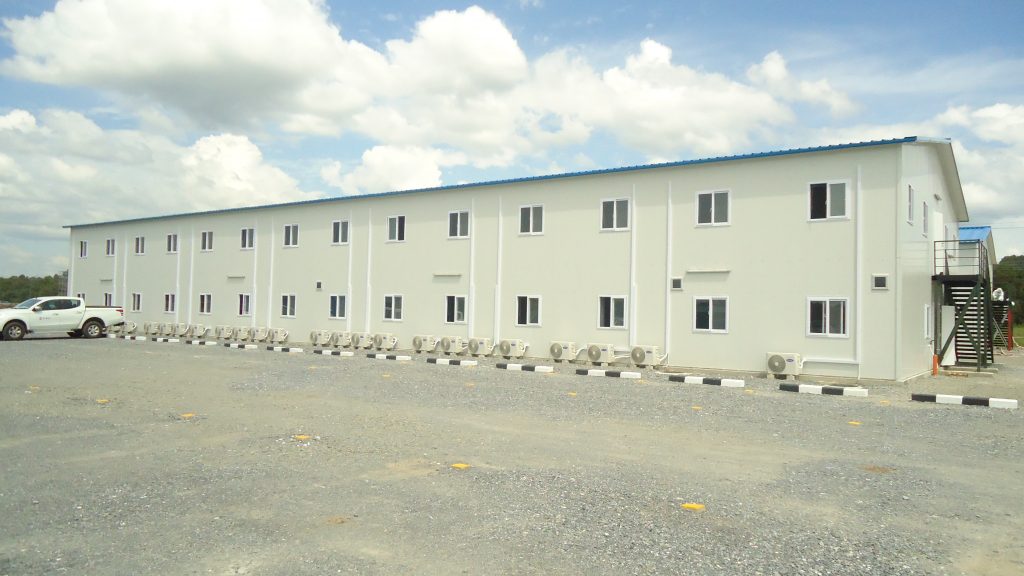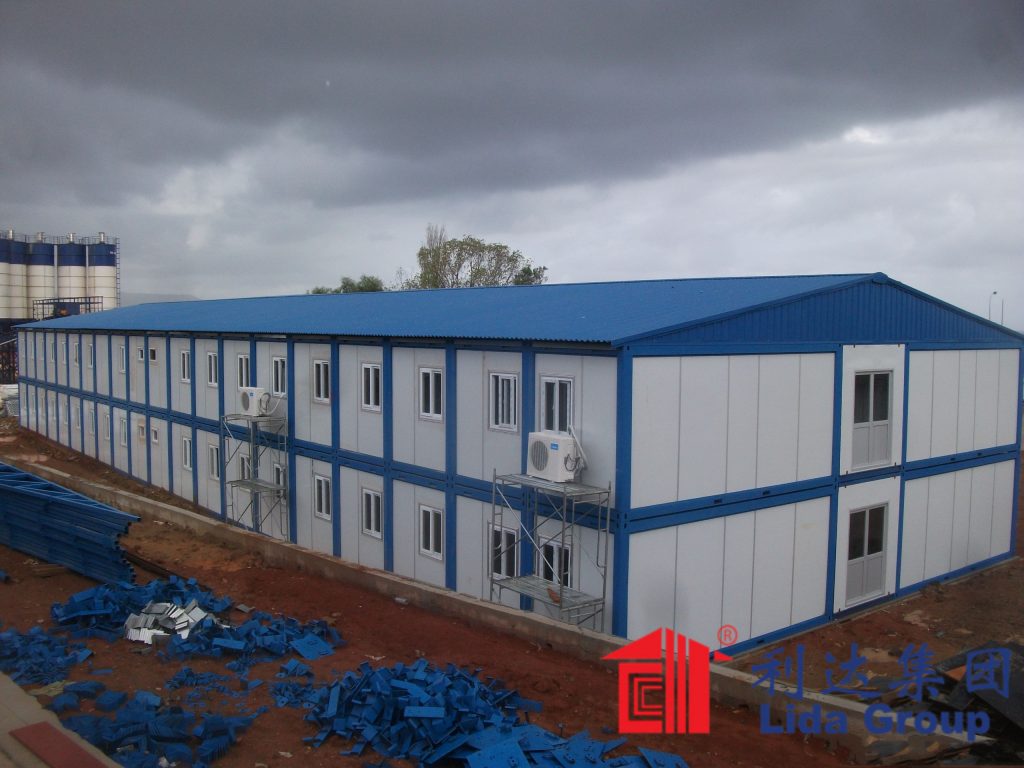The engine of global progress is often powered by workforces operating far from urban centers—in the remote reaches of mining operations, the vast plains of renewable energy farms, the linear pathways of new railway lines, and the isolated sites of large-scale infrastructure projects. For decades, accommodating these essential workers has been an afterthought, often synonymous with basic, temporary, and sometimes inadequate lodging. These traditional man camps and labor camps, frequently composed of simple, draughty units, have historically struggled with issues of poor energy efficiency, occupant discomfort, high operational costs, and a lack of connectivity, contributing to challenges in worker well-being, retention, and overall project productivity.
However, a profound transformation is underway. The convergence of demographic shifts, higher expectations for quality of life, corporate emphasis on ESG (Environmental, Social, and Governance) principles, and relentless technological advancement is reshaping the landscape of remote workforce housing. Leading this revolution is Lida Group, which is moving far beyond the concept of simple “mobile houses” to create integrated, high-quality, and intelligent living ecosystems. By seamlessly integrating cutting-edge smart technology into its premium prefabricated units, Lida Group is not just providing shelter; it is future-proofing workforce housing, enhancing operational efficiency, and fundamentally elevating the standard of living for the modern remote worker.

**The Imperative for Evolution: Why Smart, Quality Housing is No Longer Optional**
The business case for investing in high-quality, smart workforce housing is stronger than ever. It is a strategic imperative driven by several critical factors:
1. **The War for Talent:** In a competitive global market, attracting and retaining skilled workers is a significant challenge. Companies can no longer offer subpar living conditions and expect to maintain a stable, motivated workforce. High-quality accommodation has become a key differentiator and a powerful tool for talent acquisition and retention.
2. **Productivity and Safety:** A well-rested, comfortable, and healthy worker is a safer and more productive worker. Inadequate housing that leads to poor sleep, discomfort, or low morale directly impacts focus, increases the risk of accidents, and reduces on-the-job efficiency, ultimately affecting the project’s bottom line.
3. **The ESG Mandate:** Investors, stakeholders, and the public increasingly hold corporations accountable for their social and environmental footprint. The “Social” component directly relates to the fair treatment and well-being of employees. Providing high-standard, sustainable living conditions is a tangible demonstration of a company’s commitment to its people. Simultaneously, the “Environmental” component demands drastic reductions in energy consumption and waste, goals that smart technology can directly address.
4. **Rising Operational Costs:** The traditional model of inefficient housing is financially unsustainable. Remote sites often rely on expensive diesel generators for power. Inefficient buildings with poor insulation lead to exorbitant heating and cooling costs, representing a continuous and significant operational expense.
5. **The Digital Expectation:** The modern workforce is digitally native. They expect reliable, high-speed connectivity for communication, entertainment, and personal development, even in the most remote locations. A lack of robust digital infrastructure is a major source of dissatisfaction.
Lida Group’s approach is engineered specifically to address these multifaceted challenges, turning workforce housing from a cost center into a strategic asset.
**The Foundation: Uncompromising Quality through Advanced Prefabrication**
Before a single smart device is installed, the physical shell of the building must be superior. Lida Group’s mobile houses are built on a foundation of high-quality, off-site manufacturing. Utilizing advanced sandwich panel technology—typically featuring robust steel facings and a high-R-value insulating core of polyurethane (PUR) or rock wool—these structures offer inherent advantages:
* **Structural Integrity:** Designed to withstand harsh environmental conditions, from extreme temperatures and high winds to heavy snow loads.
* **Thermal Superiority:** The continuous insulation provided by the sandwich panels creates an exceptionally tight building envelope, drastically reducing the energy required for heating and cooling. This is the critical first step in enabling energy-efficient smart systems to function optimally.
* **Acoustic Comfort:** The insulating core also provides excellent sound attenuation, ensuring peace and quiet for occupants after long shifts.
* **Speed and Precision:** Factory-based construction ensures consistent, high-quality control, rapid production, and minimal on-site disruption. Entire communities can be deployed in weeks, not months.
This high-performance physical infrastructure provides the perfect, resilient canvas onto which the layer of smart technology is applied.

**The Digital Nervous System: Integrating Smart Technology for a Connected Ecosystem**
Lida Group’s vision is to create a fully integrated “Smart Camp,” where technology works silently in the background to enhance efficiency, security, and comfort. This integration occurs at several levels:
**1. The Unit Level: Personalized Comfort and Control**
Each individual living unit is equipped with a suite of IoT (Internet of Things) sensors and devices that transform it from a static room into a responsive living space.
* **Smart Climate Control:** Instead of a simple thermostat, units feature intelligent zoning systems. Sensors monitor occupancy, automatically adjusting temperature or venting when a room is empty to save energy. Residents can often control their unit’s temperature via a smartphone app, personalizing their comfort.
* **Integrated Environmental Monitoring:** Built-in sensors continuously track air quality (CO2, VOC levels), humidity, and temperature. If air quality drops, smart ventilation systems can activate to introduce fresh air, ensuring a healthy indoor environment that prevents mold and promotes well-being.
* **Smart Lighting:** LED lighting systems with occupancy and daylight sensors ensure lights are only on when needed. Lighting can be programmed for different scenes (e.g., “relax,” “read”) and controlled remotely.
* **Energy Management Dashboards:** Residents can view their unit’s energy and water usage in near real-time through a simple interface, promoting conscious consumption.
**2. The Camp Level: Operational Intelligence and Centralized Management**
The true power of smart technology is realized when individual units are networked into a central management platform. This “camp brain” provides unparalleled oversight and control for facility managers.
* **Centralized Building Management System (BMS):** This is the mission control center for the entire housing community. The BMS aggregates data from every unit and common area, allowing managers to:
* **Monitor Energy and Water Usage:** Identify consumption patterns, detect anomalies that indicate leaks or waste, and generate reports for ESG compliance.
* **Perform Predictive Maintenance:** Sensors on critical equipment like HVAC systems can monitor performance and predict failures before they occur. The system can automatically generate maintenance tickets, preventing disruptive breakdowns and reducing repair costs.
* **Manage Occupancy and Assets:** Know which units are occupied, track cleaning schedules, and manage the allocation of assets in real-time.
* **Smart Grid and Microgrid Integration:** For remote sites, this is a game-changer. The entire camp can be integrated with on-site renewable energy sources (solar arrays, wind turbines) and battery storage systems. The smart BMS can intelligently manage energy flow, prioritizing solar power during the day, storing excess energy, and drawing from generators or the grid only when necessary. This drastically reduces diesel consumption, fuel costs, and carbon emissions.
* **Advanced Water Management:** Smart meters detect leaks instantly across the entire network. Greywater recycling systems can be monitored and controlled, optimizing water reuse for landscaping or toilet flushing, a critical feature in water-scarce regions.
**3. The Community Level: Safety, Security, and Well-being**
Technology is also deployed to create a safer, more connected community for residents.
* **Enhanced Security:** Integrated access control systems using keycards or biometrics secure individual units and common facilities. A network of IP cameras, integrated with perimeter intrusion detection systems, enhances site security without being overly intrusive.
* **Robust Connectivity:** The foundation of any smart camp is ubiquitous, high-bandwidth connectivity. Lida Group designs infrastructure to support high-speed Wi-Fi mesh networks across the entire site, often supplemented by satellite internet backups to ensure reliability. This enables everything from video calls and streaming entertainment to the functioning of the IoT devices themselves.
* **Community Apps:** A custom mobile application for residents can serve as a hub for community engagement, providing access to work schedules, meal times, maintenance request submission, event calendars, and important announcements, fostering a sense of community and reducing feelings of isolation.

**The Tangible Benefits: Quantifying the Future-Proof Investment**
The integration of smart tech into high-quality mobile houses delivers a powerful return on investment across multiple domains:
* **Significant Operational Cost Savings:** The reduction in energy and water consumption is the most immediate financial benefit. Predictive maintenance avoids costly emergency repairs and extends the lifespan of equipment. The efficiency gains can lead to a reduction in on-site management staff requirements.
* **Enhanced Worker Attraction and Retention:** Offering a modern, comfortable, and connected living environment is a powerful perk. It demonstrates that the company values its employees’ well-being, leading to higher job satisfaction, lower turnover rates, and reduced recruitment costs.
* **Improved Health, Safety, and Productivity:** Monitoring air quality and ensuring thermal comfort leads to a healthier workforce, potentially reducing sick days. A safe, secure environment and good sleep quality directly contribute to higher alertness and productivity on the job site.
* **Superior ESG Performance:** The drastic reduction in fossil fuel consumption and greenhouse gas emissions is a major ESG win. The transparent data provided by the BMS offers concrete metrics for reporting on social (worker welfare) and environmental (resource reduction) performance, enhancing the company’s reputation.
* **Data-Driven Decision Making:** Camp managers move from reactive problem-solving to proactive management based on real-time data. This allows for optimized operations, better budgeting, and continuous improvement.
**Challenges and the Path Forward**
Implementing such advanced systems is not without its challenges. The initial capital expenditure is higher than for traditional housing, though the TCO (Total Cost of Ownership) proves it to be a wise investment. Ensuring cybersecurity for a network of connected devices is paramount and requires robust protocols. Furthermore, these systems demand a new skill set for on-site managers, necessitating training and support.
The future direction of this integration is incredibly promising. We can anticipate the use of AI and machine learning to further optimize energy use, predicting patterns and making adjustments automatically. Wider adoption of renewables and larger-scale battery storage will push camps closer to net-zero energy status. Augmented reality (AR) could be used for remote maintenance support, and even greater personalization of living spaces will become standard.

**Conclusion**
Lida Group’s pioneering integration of smart technology into high-quality mobile housing represents a quantum leap for the remote workforce accommodation sector. It successfully shatters the old paradigm of temporary, inefficient, and impersonal lodging, replacing it with a new model that is permanent in quality, intelligent in operation, and human-centric in design.
This approach is the very definition of future-proofing. It future-proofs projects against rising energy costs and stringent environmental regulations. It future-proofs companies against the escalating war for talent by providing a compelling value proposition to workers. Most importantly, it future-proofs the well-being of the workforce itself, ensuring that those who power our most critical projects in the world’s remote corners can do so from a base that is safe, comfortable, healthy, and connected. By viewing workforce housing not as a simple container for people, but as a complex, integrated system where physical durability and digital intelligence converge, Lida Group is not just building mobile houses; it is engineering the future of remote living itself. This is a future that is more sustainable, more efficient, and unequivocally more humane.

Related news
-
Coastal Project Innovation: Lida Group's Corrosion-Resistant Prefab Building Systems Protect Temporary Sandwich House Dwellings
2025-08-25 15:31:44
-
Sustainable and Strong: Eco-Friendly Prefab Building from Lida Group Creates Insulated Temporary Sandwich House Communities.
2025-08-25 15:10:43
-
Luxury Meets Mobility: Lida Group's High Quality Mobile House Range Features Premium Temporary Sandwich Panel Designs.
2025-08-25 14:37:43
contact us
- Tel: +86-532-88966982
- Whatsapp: +86-13793209022
- E-mail: sales@lidajituan.com


